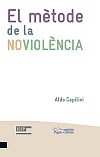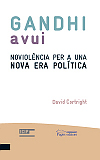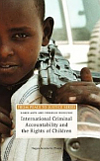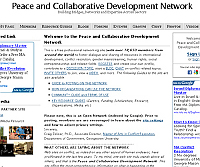Recommendations
More recommendations
-

The nonviolence method
Aldo Capitini. El mètode de la noviolència. Institut Català Internacional per la Pau; Pagès, 2010. Col·lecció Noviolència i lluita per la pau, 2.
As a courageous advocate of an active and positive conception of nonviolence, Aldo Capitini believed in the primacy of direct action. That is the reason why he was imprisoned twice in Fascist era, and that is why he organised the first march for peace from Perugia to Assisi, in 1961. It was a good example of how to engage in politics, influencing power relations by means of nonviolent methods, despite not being a party politician.
As a philosopher, he is very thought-provoking and even innovative in his arguments for concepts like copresence, which broadens the range of our moral responsibility as thinking beings to include everyone - the living, the dead, those yet to be born, future generations, non-human animals, everything that lives. Using clear and sometimes poetic language, he expresses the religious feeling of the copresence of the living and the dead and respect for all living beings.
This book shows us individual and collective techniques for nonviolence, emphasising the need for training so that when the time comes to use them, we are not unprepared. And it also includes examples of successful cases, because it advocates something that too often goes unnoticed: the nonviolent method works.
For Capitini, the nonviolent method is the practical expression of the poetic and religious concept of copresence, with total coincidence between the means and the ends, according to Giuliano Pontara in this first edition to be published in Catalan: "Violence, however revolutionary it is, paves the way for tyrants." A lesson from history.
However, nonviolence rebels against the passiveness of nonviolence. It is a permanent revolution, a continuous fight against the destructive indoctrination of autonomy and the personal sense of identity (personal transmutation). And it also transforms structures and institutions. It is against war and against militarism, against dogmatism and against the violence intrinsic to market fundamentalism, against dictatorships, against corruption and against the sclerosis of political parties and churches. We should bear in mind that Capitini was an Italian. We should also remember that many concerns have been raised about the Italianisation of political systems, including the system in Catalonia. This should be remembered in order to understand the topical nature of a work like this one in our modern environment.
J. A.
-

Gandhi and Beyond
David Cortright. Gandhi avui: noviolència per a una nova era política. Barcelona: Institut Català Internacional per la Pau; Pagès, 2010. Col·lecció Noviolència i lluita per la pau, 1.
Everyone likes Gandhi. Social and political figures from various areas and with various ideologies often quote him, when justifying civil disobedience, among other reasons. They attribute a great victory to him, in his use of peaceful means against the structural violence used by the British Empire. However, they doubt whether his actions could be applied in other situations. As a result, he is considered an exceptional case (together with Martin Luther King and Nelson Mandela), in a very specific context which therefore cannot be repeated, because it is linked to a unique person in history.
That is why in today's conflicts, the sometimes cynically rhetorical question "What would Gandhi do?" is used to legitimise the use of force as a valid and effective means. David Cortright's approach goes further. He seriously considers what Gandhi would do, or to put it another way, what someone inspired by Gandhi, such as Barack Obama, would do. How should a citizen committed to nonviolence behave today in a Palestinian refugee camp, in the midst of the Iraq War, when faced with a suicidal terrorist, a sex attacker, in strategic debates within the social movement for international justice, or in the new forms of communication?
This book shows us that apart from Gandhi, Luther King and Mandela, there have been other luminaries of nonviolence, such as Dorothy Day and Barbara Deming, although the majority of its heroes are nameless. That is what both history and modern reality tells us. And perhaps this is the key contribution made by this text: it invites us to participate and therefore to be anonymous heroes of contemporary nonviolence. Few books contain such a successful combination of theoretical lessons and the practical advice necessary for carrying undertake successful nonviolent actions. In other words, actions that change situations of social injustice. In short, this is a well written book with interesting content, but above all it is a useful book.
J. A.
-

International Criminal Accountability and the Rights of Children
Karin Arts and Vesselin Popovski (ed.). International Criminal Accountability and the Rights of Children. Hague Academic Press, 2006.
"Our exploratory reflections focused on the future must have the courage to think the unthinkable and imagine the unimaginable. This is the only way to end the perpetual and vicious spiral of violence that we do not foresee, inadequate responses, more violence, etc."
These words conclude an academically excellent book, in which the most distinguished authors in the field of international criminal justice provide an overview of the protection of children's rights by the international criminal justice system. The first question they ask is as follows: should children who have committed atrocities and human rights violations pay for their crimes? The answer seems to suggest that as a general rule, they should not, as children should be considered victims of armed conflict. However, if they have committed a serious violation of human rights, then punishment could be justified, providing that the trial complies with the international laws on juvenile justice, taking into account the inherent vulnerability of children, seeking alternatives to prison and in short, aiming at their reinclusion in their communities. International criminal courts have limited resources and children and teenagers are considered to mostly be obeying orders, and it is therefore much more efficient, as well as more just, to prosecute and punish those responsible for their actions. Second, the current treaty on children soldiers, the optional protocol to the convention on the rights of the child which came into force in 2002, permits voluntary recruitment from sixteen years of age, and this still happens in many countries. The example of the British soldiers under eighteen years of age stationed in Iraq is a paradigm in this respect. They cannot vote, but they are allowed to participate in armed conflicts. Third, it highlights the need to maintain the connection between justice and truth and peace, so that accountability can lead to the construction of a more sustainable peace, as this affects the past but will also have consequences in the future. For example, prosecution of the political and military leaders of Japan and Nazi Germany after the Second World War enabled the German and Japanese societies to overcome their collective feelings of guilt.
Which are more useful: global mechanisms for responsibility, or the application of justice on a local level? Whatever the case, there is agreement that these mechanisms must always have a perspective that specifically focuses on children. The book discusses concepts such as human dignity, values shared by everyone, vulnerability, but also children's resistance under the most difficult circumstances. And the importance of prevention and therefore training armed forces to respect human rights and the rights of children. This is an essential book for all those interested in this subject, as well as those interested in the aspect more applicable to armed conflicts, such as voluntary workers, as well as journalists and soldiers on the "humanitarian missions".
J. A.
-

Janadesh
Janadesh is the Hindi word that means 'the verdict of the people'. It is also the title of the documentary produced by Quepo which looks at the 350-kilometre march by 26,000 people over twenty-five days to demand that the Indian government undertake a land reform programme. The documentary has many outstanding merits. First, it depicts events which took place in 2007 and which despite their importance, received more or less no media attention. Obviously, it was a nonviolent march with an objective related to social justice, it was not a war, and it contained nothing to arouse morbid curiosity.
Another outstanding feature of the documentary is the way it is constructed, as participants on the march create the story as they are marching. But the central figure in the story is Rajagopal, leader of the Ekta Parishad movement, which organised the protest. His words reflect his political conviction and insight, as the inspiration behind the march, as the heir to Gandhian thought, as a speaker when the march is resting, as the strategist when explaining his political movements and above all, as a true leader and activist in an organisation that must survive him.
Janadesh is the story of a struggle, a collective dream, at a time when our "advanced" societies have few collective dreams left, and unfortunately those that come together around them usually have more to do with twenty-two people chasing a ball.P.A.
-

Peace and Collaborative Development
http://www.internationalpeaceandconflict.org/
The Peace and Collaborative Development Network is, as the portal itself says, a professional networking site for individuals and organizations worldwide involved in development, conflict resolution and related fields to foster dialogue and sharing of resources in international development. Membership is free and it provides access to resources, research and above all, contact with other professionals all over the world.
It is an excellent source for any area of the construction of and education for peace. New debates, publications and projects on the field are produced every week. New information on grants, report, debates, events, training and news all over the world is constanlty available.
At a time when social networks are in vogue, the emergence of specialised networks is necessary for the management of information by professionals. PCDN is a portal that uses some of the most popular web 2.0 tools to make the creation of networks possible and more importantly, to provide a platform for sharing knowledge.
It is a pioneering initiative in the field of peace which is having a considerable impact on the community. It remains to be seen how it will adapt its services to the needs of its professionals and how it filters information to avoid one of most common problems on this type of website: the excess of information.
G.M.